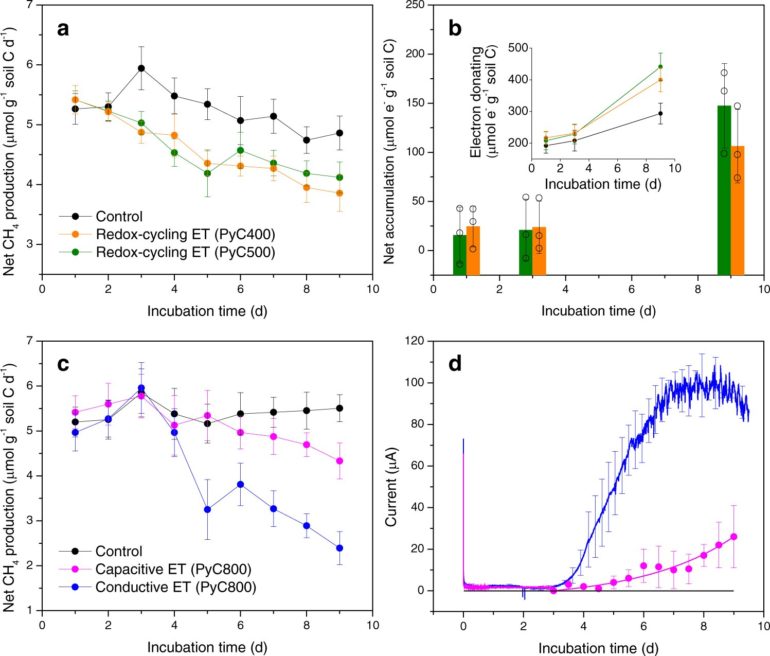Climatic changes are increasingly giving rise to major fires on peatlands in the northern hemisphere, which release massive quantities of carbon dioxide. However, the biomass of the peatland is not entirely consumed by fire, some turns to charcoal in the absence of air. Now, Dr. Tianran Sun and Professor Lars Angenent from Environmental Biotechnology at the University of Tübingen in cooperation with colleagues at Cornell University in the U.S. have discovered that the carbonized biomass reduces production of the methane gases naturally occurring in the peat soil. They estimate that in the long-term after a fire the presence of carbonized biomass causes peatlands to release 13 to 24 percent less methane than before. Methane is a potent greenhouse gas involved in global warming. The scientists suggest that these new findings should be taken into account when calculating the global carbon exchange and modeling the future climate. Their study has been published in the journal Nature Communications.
Methane production occurs in peatland through the activity of microbes that excrete the gas as a waste product of their metabolism. Despite the methane production, intact peatlands, with a peat layer that grows year after year, binds large quantities of carbon, which are generally seen as valuable carbon storage reservoirs and not as drivers of global warming. “This changes when peatlands catch fire, however,” says environmental chemist Tianran Sun. “The carbon is released as carbon dioxide and passes into the atmosphere. Smoldering fires beneath the surface especially can burn unnoticed for a long time in peatlands and are very difficult to extinguish.”
Dual effect of carbonized biomass
In a laboratory trial with samples of peat soil and controlled addition of carbonized biomass, the scientists examined the quantitative conversion of various substances and the gas emissions. “On the one hand, the carbon in the carbonized biomass remains bonded and is harmless to the climate,” says Sun. “On the other hand, the carbonized biomass is capable of absorbing electrons.” This causes the populations of bacteria in the peat soil that obtain their energy from oxidation processes to grow. “The methane producers are suppressed,” says the scientist. The carbonized biomass can pass the electrons on to elements of the peat soil and is then available again to absorb further electrons from the metabolism of bacteria. “The peat soil has great capacity to absorb electrons,” says Lars Angenent. This significantly reduces methane production.
Nonetheless, Angenent is keen not to be misunderstood: “Our new findings are only a little good news in the midst of a lot of bad news. Peatland fires have devastating effects and release immense quantities of carbon dioxide, that further warms our already too-hot world climate.”
Therefore, if the reduced methane production found after peatland fires is incorporated into models of the future climate, it will not drastically change the general results. But, it is important to account for all effects, even the positive ones.
Historical climate effects of permafrost peatland surprise researchers
More information:
Tianran Sun et al, Suppressing peatland methane production by electron snorkeling through pyrogenic carbon in controlled laboratory incubations, Nature Communications (2021). DOI: 10.1038/s41467-021-24350-y
Provided by
Universitaet Tübingen
Citation:
Peatland fires reduce future methane production in peat soils (2021, July 9)
retrieved 11 July 2021
from https://phys.org/news/2021-07-peatland-future-methane-production-peat.html
This document is subject to copyright. Apart from any fair dealing for the purpose of private study or research, no
part may be reproduced without the written permission. The content is provided for information purposes only.



